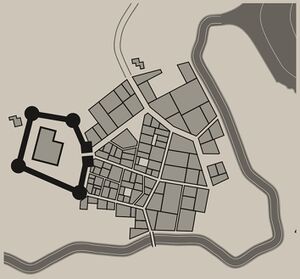Procedural generation (nonfiction): Difference between revisions
Jump to navigation
Jump to search
No edit summary |
No edit summary |
||
| Line 29: | Line 29: | ||
* [https://en.wikipedia.org/wiki/Procedural_generation Procedural generation] @ Wikipedia | * [https://en.wikipedia.org/wiki/Procedural_generation Procedural generation] @ Wikipedia | ||
* [https://boingboing.net/2018/09/10/heroic-cartography.html Procedurally generated maps of medieval cities, suitable for RPGs] @ Boing Boing | * [https://boingboing.net/2018/09/10/heroic-cartography.html Procedurally generated maps of medieval cities, suitable for RPGs] @ Boing Boing | ||
* [https://boingboing.net/2018/12/03/procedurally-generated-racetra.html Procedurally-generated racetracks] | |||
[[Category:Nonfiction (nonfiction)]] | [[Category:Nonfiction (nonfiction)]] | ||
[[Category:Algorithms (nonfiction)]] | [[Category:Algorithms (nonfiction)]] | ||
[[Category:Computation (nonfiction)]] | [[Category:Computation (nonfiction)]] | ||
Revision as of 07:38, 3 December 2018
In computing, procedural generation is a method of creating data algorithmically as opposed to manually.
In computer graphics, it is also called random generation and is commonly used to create textures and 3D models.
In video games, it is used to automatically create large amounts of content in a game.
Advantages of procedural generation include smaller file sizes, larger amounts of content, and randomness for less predictable gameplay.
In the News
Fiction cross-reference
- Crimes against mathematical constants
- Gnomon algorithm
- Gnomon Chronicles
- Mathematics
- Procedurally generated urinal cake
Nonfiction cross-reference
External links:
